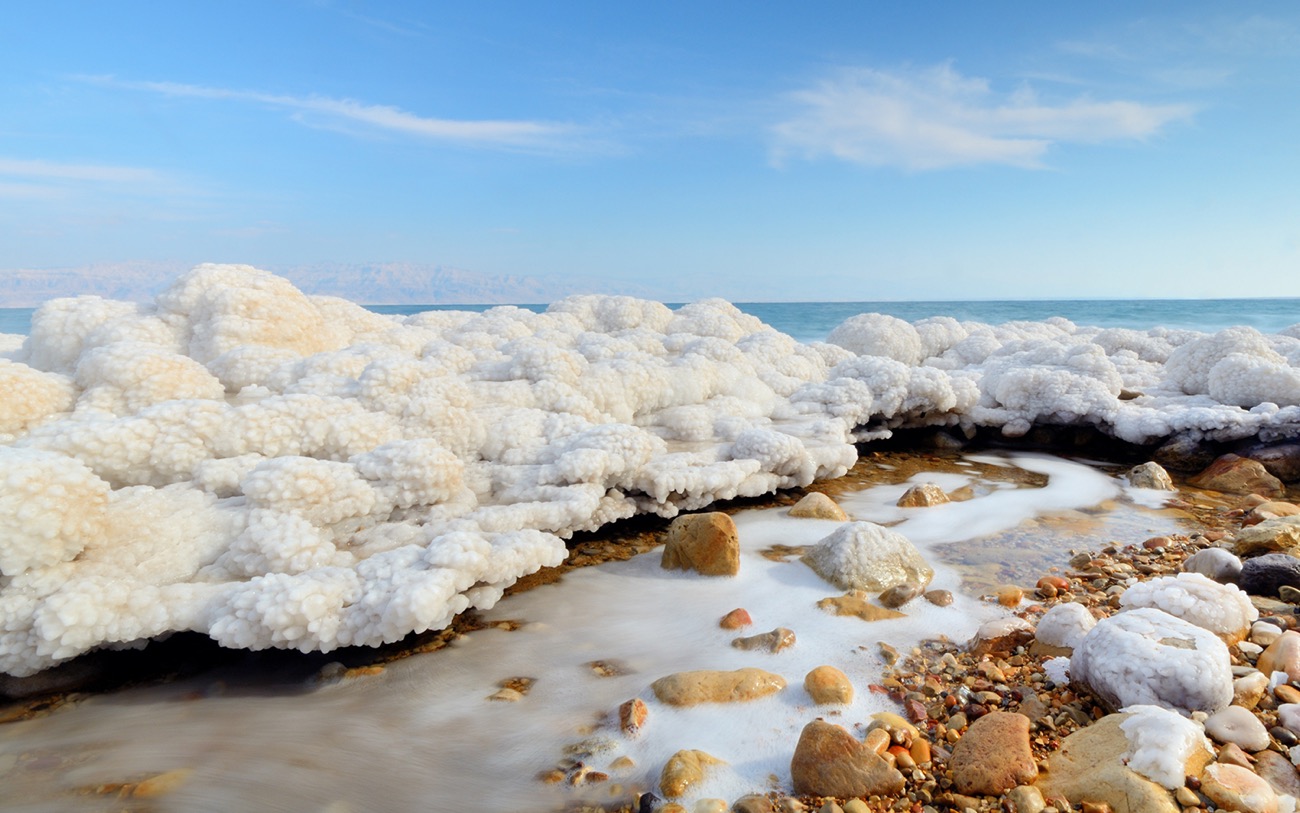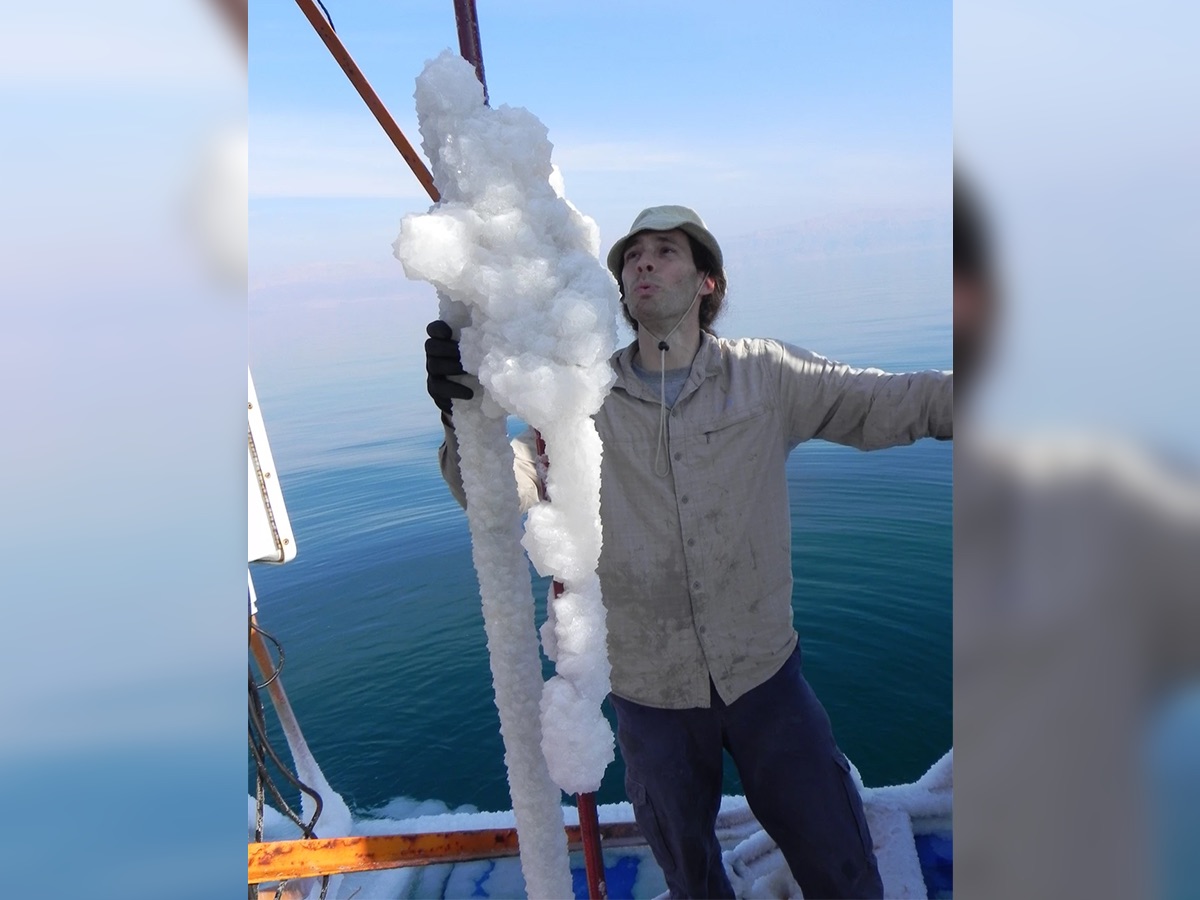Why Is It 'Snowing' Salt in the Dead Sea?

A mysterious underwater "snowfall" of salt is falling and accumulating far below the surface of the Dead Sea.
For decades the already-salty Dead Sea has been slowly getting saltier as its fresh water steadily evaporates. And the behavior of some of this excess salt seems to defy the laws of physics. As expected, plenty of salt collects near the sea's surface, buoyed up by cooler water below. But a steady supply of salt also inexplicably travels steadily downward, piling up at the sea bottom.
Recently, scientists cracked this long-standing mystery. They found that almost undetectable disturbances in the upper layers of water create so-called salt fingers that extend into the cool water, carrying salt deeper than it would normally be expected to go. [Crystal Bride Gown Transformed by Dead Sea Salt (Photos)]
The Dead Sea, which has been around for thousands of years, is bordered by the Palestinian West Bank, Israel and Jordan, and is about 10 times saltier than the ocean. It isn't a true sea; rather, it's a landlocked, briny lake fed by fresh water from the Jordan River.
But since the 1960s, irrigation has diverted much of the Dead Sea's freshwater inflow. As a result, water that evaporates isn't replenished, leaving behind a higher concentration of salt at the surface, study co-author Eckart Meiburg, a distinguished professor with the Department of Mechanical Engineering at the University of California Santa Barbara (UCSB), told Live Science in an email.
In the Dead Sea, as in other very salty lakes, upper water layers are warm and saturated with salt, while deeper waters are cooler and less salty. These layers don't mix, so how was excess salt from the top of the lake traveling down to the bottom?
The researchers hypothesized that tiny disturbances agitated warm, salt-laden surface water enough to push small "fingers" of that water into cooler water. Once there, the warm fingers cooled and couldn't hold as much salt as before. The extra salt precipitated out and formed salt crystals that then sank to the bottom, according to the study.
Sign up for the Live Science daily newsletter now
Get the world’s most fascinating discoveries delivered straight to your inbox.
Using computer visualizations, the scientists then tested their hypothesis. Their models demonstrated that even though fingers were initially too small to see (measuring only millimeters wide), there were many of them distributed across the lake's surface. Their interactions generated enough energy to propel these fingers — and quantities of salt — into cooler depths, the scientists reported.

"Together these small fingers generate a tremendous amount of salt flux," lead study author Raphael Ouillon, a UCSB mechanical engineer, said in a statement.
Over decades, the salty snow in the Dead Sea has accumulated significantly, Meiburg said.
"These deposits are about 4 meters [13 feet] thick today, and their thickness is growing at a rate of about 10 centimeters [4 inches] per year," he said in the email to Live Science.
Most of the long-term deposits settle on the central part of the lake's bottom. In shallower depths close to the shore, salt deposits that form during the winter tend to dissolve during the summer months, Meiburg explained.
No other salty lake on Earth demonstrates this unusual salt exchange, making the Dead Sea "a unique system," study co-author Nadav Lensky, a geologist with the Geological Survey of Israel, said in the statement.
Yet scientists can still look to the Dead Sea to understand the formation of vast salt deposits in Earth's crust, which may have accumulated due to similar processes in ancient lake basins long ago, Lensky said.
The findings were published online May 3 in the journal Water Resources Research.
- A Gallery of Stunning Lakes
- The 10 Strangest Places Where Life Is Found on Earth
- The 8 Hottest Places on Earth
Originally published on Live Science.

Mindy Weisberger is an editor at Scholastic and a former Live Science channel editor and senior writer. She has reported on general science, covering climate change, paleontology, biology and space. Mindy studied film at Columbia University; prior to Live Science she produced, wrote and directed media for the American Museum of Natural History in New York City. Her videos about dinosaurs, astrophysics, biodiversity and evolution appear in museums and science centers worldwide, earning awards such as the CINE Golden Eagle and the Communicator Award of Excellence. Her writing has also appeared in Scientific American, The Washington Post and How It Works Magazine. Her book "Rise of the Zombie Bugs: The Surprising Science of Parasitic Mind Control" will be published in spring 2025 by Johns Hopkins University Press.









